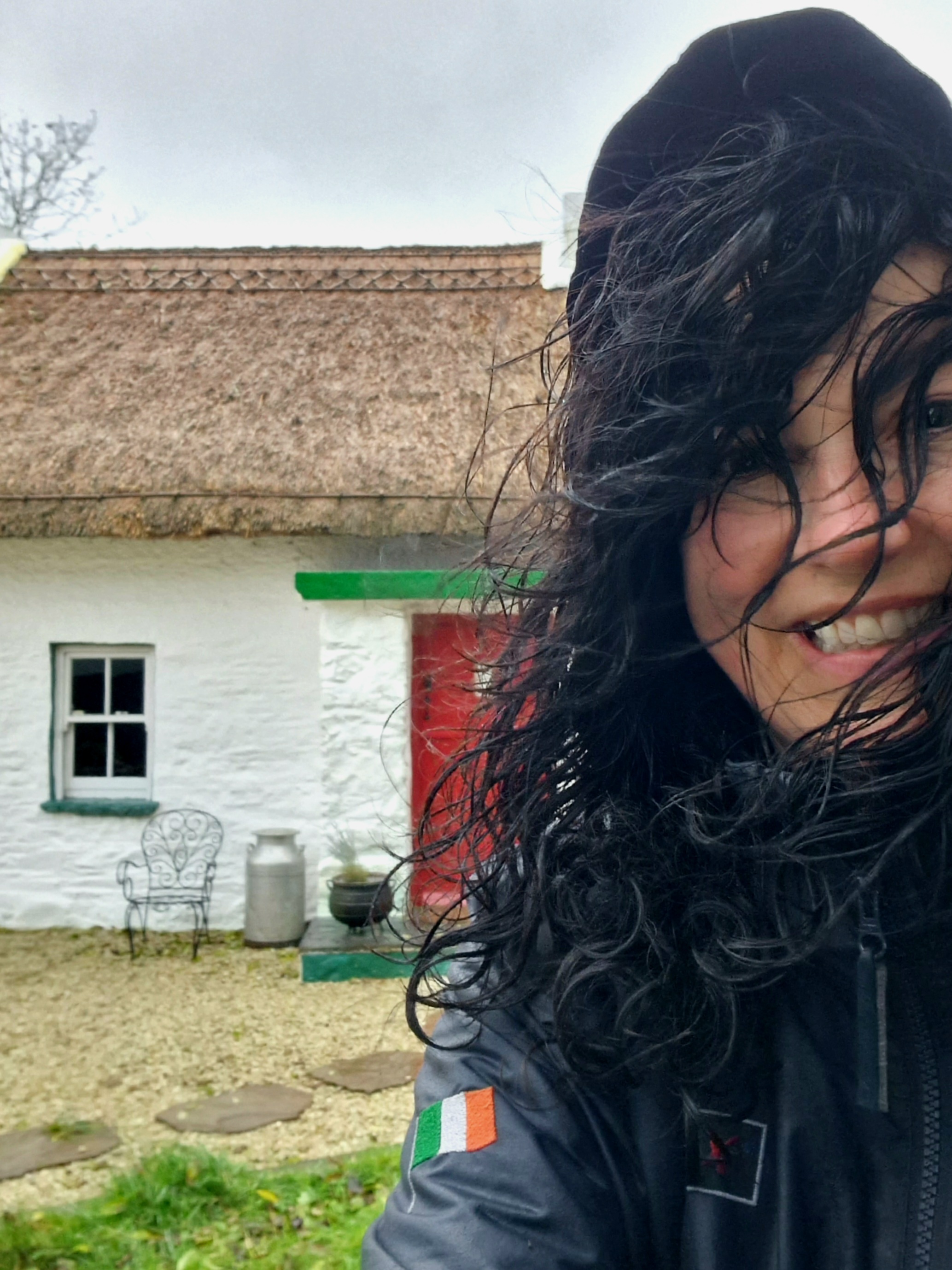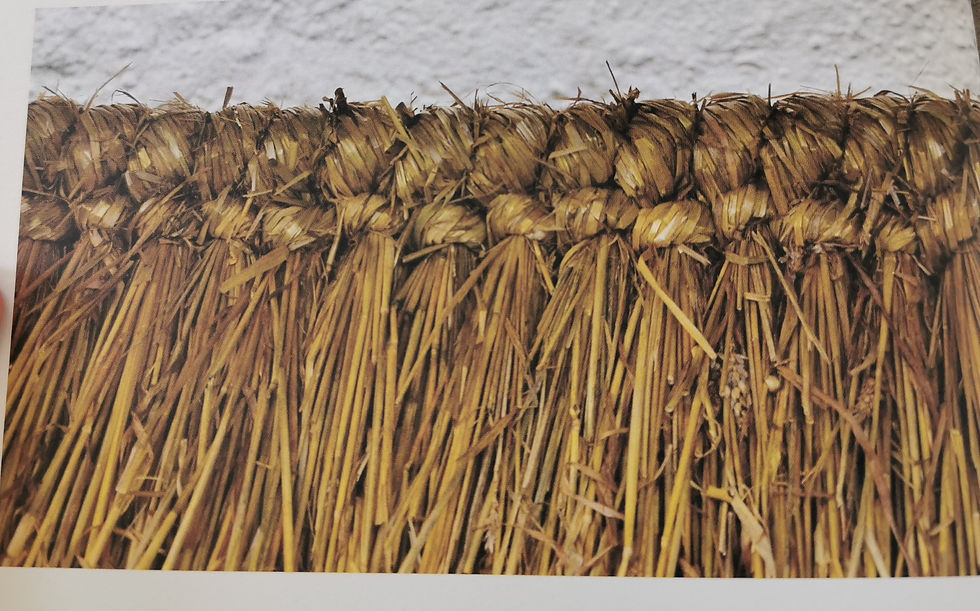The Last Straw
- Áine Mc Garry/Trohanny cottage

- Jul 20, 2022
- 4 min read
Updated: Sep 15, 2023

I have procrastinated so long over this blog mainly because there is so much to say, particularly now on the subject of thatched roofs in Ireland.
In all my 21 years of being the owner of a thatched roof, i have never read so many different newspaper articles and heard so many interviews discussing the topic of the thatch insurance crisis and the rapid disappearance of not only the craft of thatching but of the thatched roofs themselves.
It's been long overdue..

The loss of thatched roofs in Ireland over the past 20 years stands at 20-25 per cent,
a figure which is rising annually.
It is estimated there are less than 1,000 intact thatched cottages remaining on the Island of Ireland!!
There are a cumulative of reasons, but as a thatched cottage owner I can personally say the main two are insurance and maintainance (costs)
Not only is the cost of insuring a thatch roof astronomical it's a gamble whether you'll get anywhere to cover you at all.
I had been insured with a British company but since Brexit UK providers exited the Irish market.
There is at present only one company in the whole country that will now cover for thatch insurance as previous companies say they are no longer taking on new customers due to "serious deterioration in the claims experience" and even if they will consider taking you on (after an exhausting list of requirements) you could be looking at up to 4k annually!
Understandably two thirds of listed thatched buildings are now not insured at all (my feeling being that more than that are currently un-insured but afraid to openly say it for fear of consequences)

And then there are the issues with maintainance costs of a thatched roof.
Our own Trohanny Cottage is due repairs and
we've been given a quote of almost 10k.
The Department of the Environment Heritage & local government offer a thatching grant of up to 3,800k that is the same amount since 1990 when the grant was first available, no increase in 32 years!
I was told The Heritage council had an available grant of up to 8,500k but I applied and was refused, as I'm sure many others were.
That leaves me to find 7,200 euros of my own money to cover the cost of my thatched roof, not including annual bluestoneing (application of copper sulphate that prevents rot and helps prolong the golden colour of straw) and other repairs needed.



So here I am with a building of heritage (1800's vernacular authentic Irish cottage) declared listed by the government, that I cannot change (not that I would want to) that I am struggling to afford, with minimal support from the Irish government.
Are you still wondering why they are disappearing at a huge rate?!

The main reason I decided to start renting the cottage through Airbnb was to help pay for the maintainance, mostly to literally keep the (thatch) roof over our heads.
But our fee barely covers the costs of fuel, oil and electricity with the rising costs of everything and I've had to increase my own price which will mean less bookings.
And as government states we can only have a certain amount of short term rental bookings per year, we are limited in the amount we can earn anyway.
So where do we go from here..

I have a very special little place that I have been told by my overseas guests they came all the way to Ireland just to get a chance to stay in, as it's a genuine thatched Irish cottage in rural Ireland and they are so grateful for the opportunity, as are more surprisingly, the younger generation who actually are beginning to appreciate their Irish heritage.
Tourists appreciate that getting the opportunity to stay under a thatched roof is something very special and something truly unique so why isn't can't the Irish government also realise it's value?
It would break my own heart to have to remove our thatched roof, but unless I do a 'Go fund me' or similar (which I don't feel particularly comfortable with)
it's concerning for the future of Trohanny cottage and other similar places where we, as custodians, are trying so hard to preserve and upkeep because we realise the value and not in monetary terms.


In an rapidly changing modern world I feel we owe it to past and future generations at least to retain what is good in our Irish heritage.
Protecting and maintaining our vernacular heritage especially thatched vernacular buildings enhances local areas aesthetically, economically (ie sustainability/environmentally friendly), socially (providing employment for thatchers and ensuring employment for successors of a dying craft)
and of course as Ireland is marketed so strongly in terms of Tradition,
it is vital for tourism we protect built heritage.
And what is more synonymous with the ideal idea of Ireland to most tourists than the quintessentially Irish whitewashed cottage with it's golden roof.


If the government of Ireland accept that the retention of our heritage of thatch is important, then they must also accept that they have a responsibility to fund and facilitate traditional thatching and thatch buildings and that includes the ability to protect those buildings through affordable insurance.
I hope my children and their children (if they have them) don't have to 'Google' to see what an Irish thatched roof once looked like or have to pay into a folk park to see an example as a museum piece.
I hope I can always offer people the chance to stay in a genuine Irish vernacular cottage with it's original scraw/A shaped roof structure still in place and a fresh golden straw on top.
As long as I'm alive I'll fight tooth and nail to keep the thatch on Trohanny Cottage, but the sad truth is that certainly at present I'll have to fight alone.


*References Barry O'Reilly 'Living under thatch' Mercier press 2004*



Hi, as a thatch cottage owner myself, I'm at the end of my rope. We've been trying for years but no luck to get insurance. You might have seen the below article. It is Kafkaesque standards to compete with. We are going to attempt to Delist the property and apply for planning to change the roof. Young family and paying a mortgage - can't afford to be homeless if anything happened. https://extra.ie/2024/02/22/news/irish-news/thatched-house
Hi Aine - you mention there is one insurance company in Ireland providing insurance for thatched properties - would you be able to share this contact as I have not been able to get quotes for a thatch roof in Ireland or the UK due to the thatch.
The government claim that they cannot intervene in commercial insurance matters but they have intervened in medical insurance. These companies if they had their way would only insure low risk healthy people so why can this not apply to non standard construction Heritage properties? The cartel that is Irish insurance will now only quote for low risk properties they must be made to change this disgraceful state of affairs cannot be allowed to continue.
Thank you for keeping and upholding Tradition and history. Too often do governments “say” that they are for an ideal- however quite often show the opposite. Heritage and tradition often fall by the wayside due to their inability to attract money which in turn is what that government is truly interested in. If the government’s are so ecologically friendly as they purport, they would also realise that thatch and wattle and daub architecture is a form thats most ecologically friendly, completely renewable and nearly carbon free.
I wish you all the luck and I will have to look for your cottage on Airbnb so if we’re in Ireland again we may have a chance to stay or perhaps just…